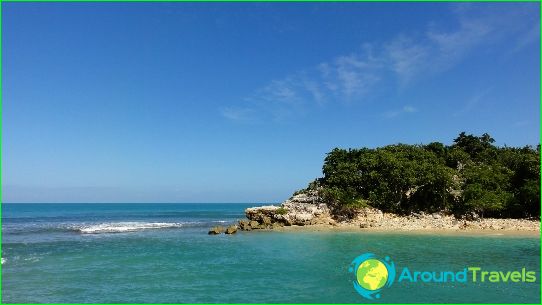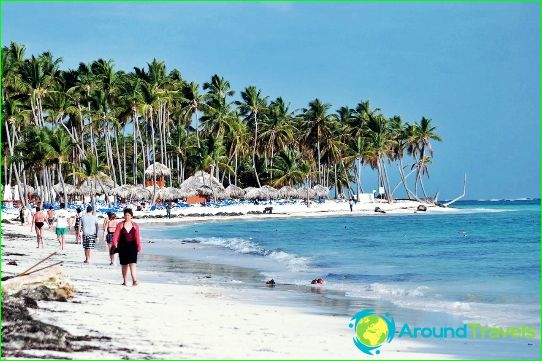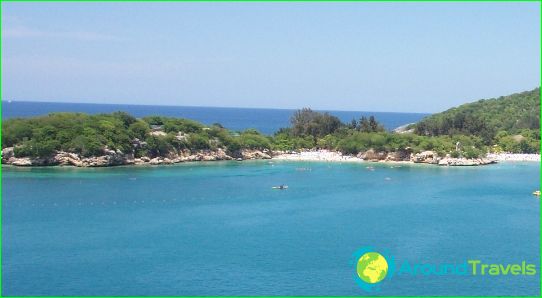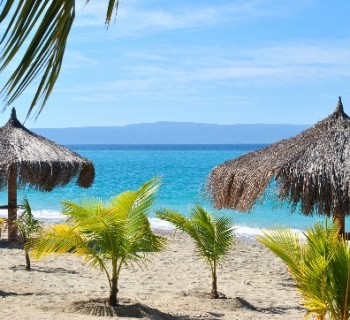Island of haiti

Among the islands of the Greater Antilles archipelago, the island of Haiti stands out, occupying the second largest area. It is separated from the island of Cuba about 100 km. The open Atlantic Ocean washes the northern shores of Haiti. The southern part of the island has access to the Caribbean Sea. The island of Haiti is also called Hispaniola, which means «Spanish». This name was given to him by Christopher Columbus.
The area of the island, together with nearby rocks and islets, is 76.5 thousand square meters. km. This surface is shared by the Republic of Haiti and the Dominican Republic (Dominican Republic). The Republic of Haiti is inhabited mainly by blacks. Whites and mulattoes make up only 5% of the population. Mulattoes prevail in the Dominican Republic. Blacks and whites in approximately equal numbers make up 27% of the total population. Port-au-Prince is the capital of the Republic of Haiti. The main city of the Dominican Republic is Santo Domingo.
Geographic characteristics
Haiti and nearby Jamaica, Cuba and Puerto Rico are the surface of the North Caribbean Ridge. It was formed as a result of the collision of geological plates. The islands of the Greater Antilles are of volcanic origin. The island of Haiti has a complex shape. Its winding coastline forms numerous bays and bays. The island has mountainous terrain in the central and western regions. The highest point of Haiti and the Antilles archipelago is Peak Duarte, which rises above sea level at 3,087 m.
Climatic conditions
Haiti has a tropical trade wind climate. The air temperature here does not depend on the change of seasons. It's always warm on the island. On the coast, the air temperature varies from +22 to +27 degrees. In the central part, where the trade winds do not penetrate, the air has a temperature of about +30 degrees or more. During the year, this piece of land in the ocean becomes the site of a large amount of precipitation. It rains in the form of tropical showers. In August and September, the island of Haiti is hit by typhoons and hurricanes that form in the Caribbean.
Natural features
The island of Haiti is covered with tropical evergreen forests. More than 100 species of woody plants grow there, among which there is a rosewood, a yamasin palm, etc. The fauna of the island does not differ in diversity. Rodents, bats and pets are found among mammals. Lizards and crocodiles live near lakes and rivers.




